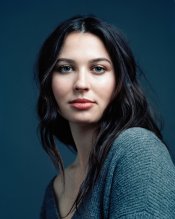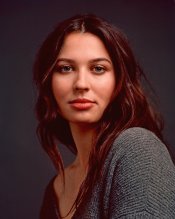Kuby
Member
I'm curious as to how to avoid colour crossover with c-41 in a Jobo unit (I use a CPP2).
As per PE and other's advice, I have recently used 2x 38C pre wets @ about 30 sec before developing in an effort to keep the temp up. While my negs are streak-free, I seem to be experiencing some disconcerting colour crossover. Please see the attached image for an example (the backdrop and her shirt are grey, but come out ~very~ cyan/blue).
I can't help but wonder if the heavy cyan in the shadows is in fact caused by the pre wet. In any event, I concede there is going to have to be some acceptable level of colour crossover. But this is too much.
Does anyone have any advice as to what to try next?
One thought I had was to pre-warm for ~10 minutes to get the tanks temp as high as possible, heat the chem to somewhere higher than 37.8 (say 38.8), anticipate a 2 degree drop in the temp throughout the process, thus maintaining a mean temp of 37.8 throughout the 3.15 minutes.
Any thoughts or advice?
As per PE and other's advice, I have recently used 2x 38C pre wets @ about 30 sec before developing in an effort to keep the temp up. While my negs are streak-free, I seem to be experiencing some disconcerting colour crossover. Please see the attached image for an example (the backdrop and her shirt are grey, but come out ~very~ cyan/blue).
I can't help but wonder if the heavy cyan in the shadows is in fact caused by the pre wet. In any event, I concede there is going to have to be some acceptable level of colour crossover. But this is too much.
Does anyone have any advice as to what to try next?
One thought I had was to pre-warm for ~10 minutes to get the tanks temp as high as possible, heat the chem to somewhere higher than 37.8 (say 38.8), anticipate a 2 degree drop in the temp throughout the process, thus maintaining a mean temp of 37.8 throughout the 3.15 minutes.
Any thoughts or advice?















